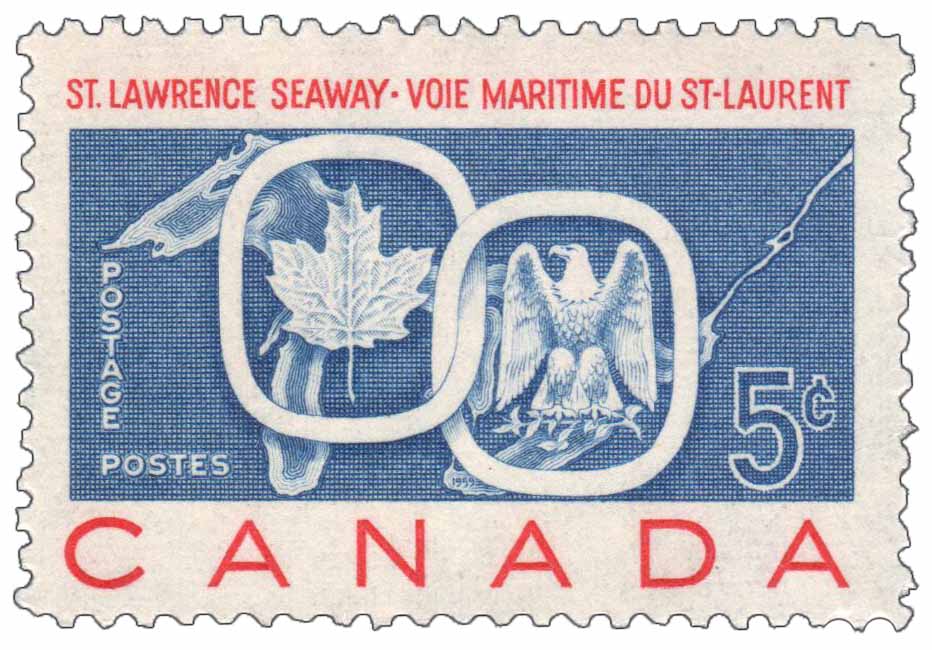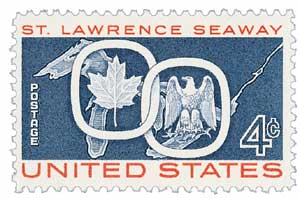
# 1131 - 1959 4c St. Lawrence Seaway
Cartier Explores St. Lawrence River
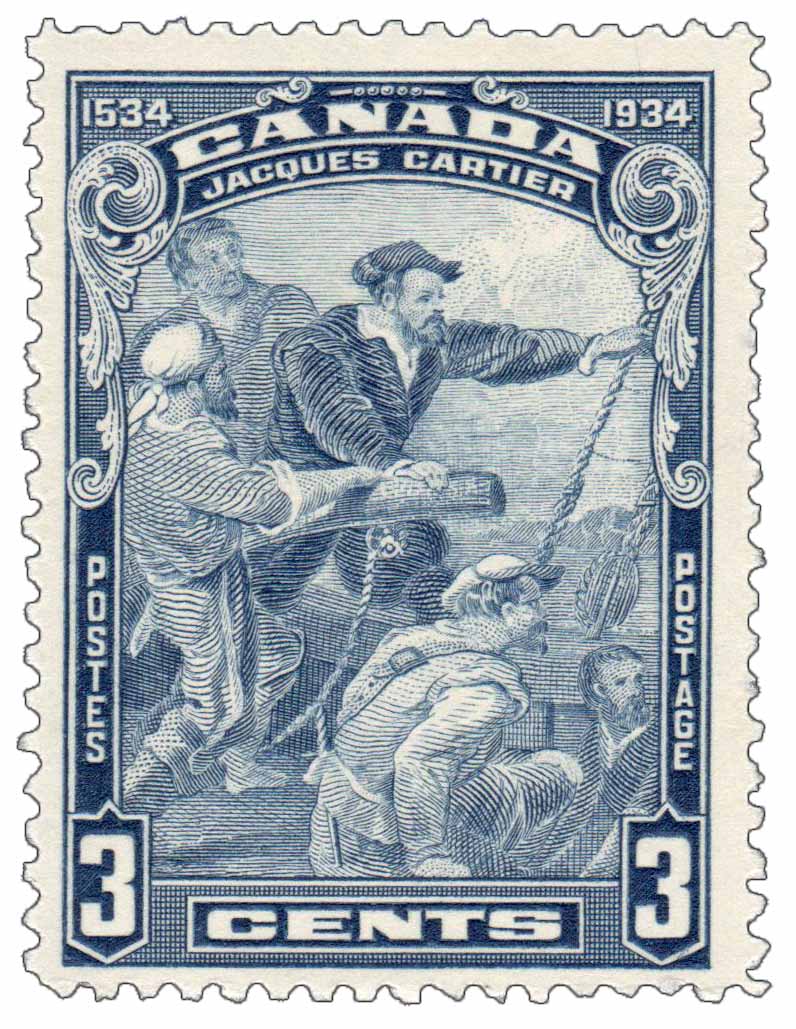
On June 9, 1534, Jacques Cartier became the first European explorer to travel the St. Lawrence River.
Cartier was born on December 31, 1491, in Saint-Malo, Brittany, France. In 1534, the bishop of Saint-Malo introduced Cartier to King Francis I and recommended him for a commission to search for a northwest passage to Asia. The bishop claimed Cartier had previously journeyed to Newfoundland and Brazil, exhibiting his ability to “lead ships to the discovery of new lands in the New World.”
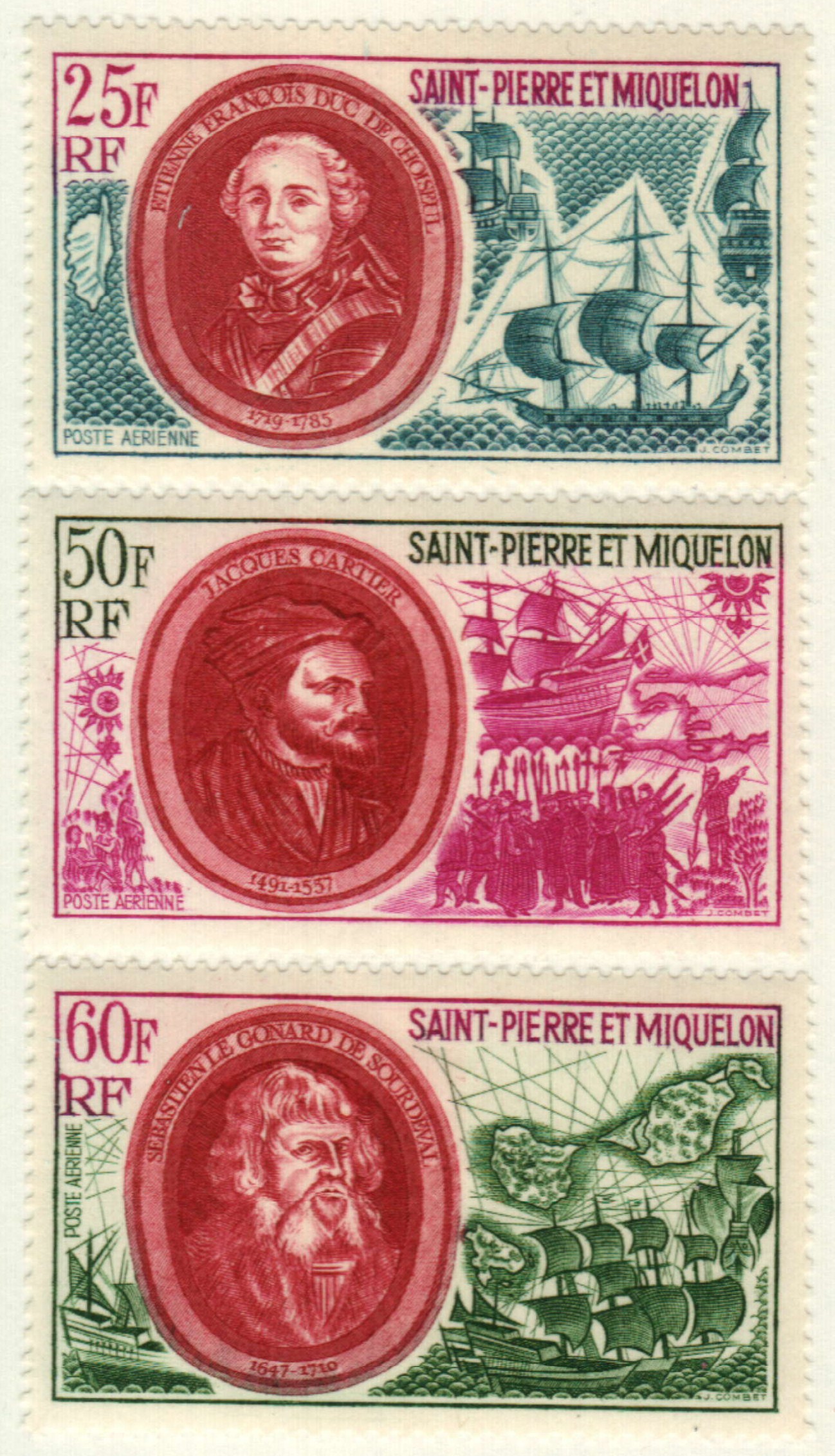
Cartier set sail on April 20, 1534, with a crew of 61 men and a mission to “discover certain islands and lands where it is said that a great quantity of gold and other precious things are to be found.” He sailed across the ocean for 20 days before reaching North America. Beginning on May 10, Cartier explored parts of Newfoundland in the Canadian Atlantic provinces.
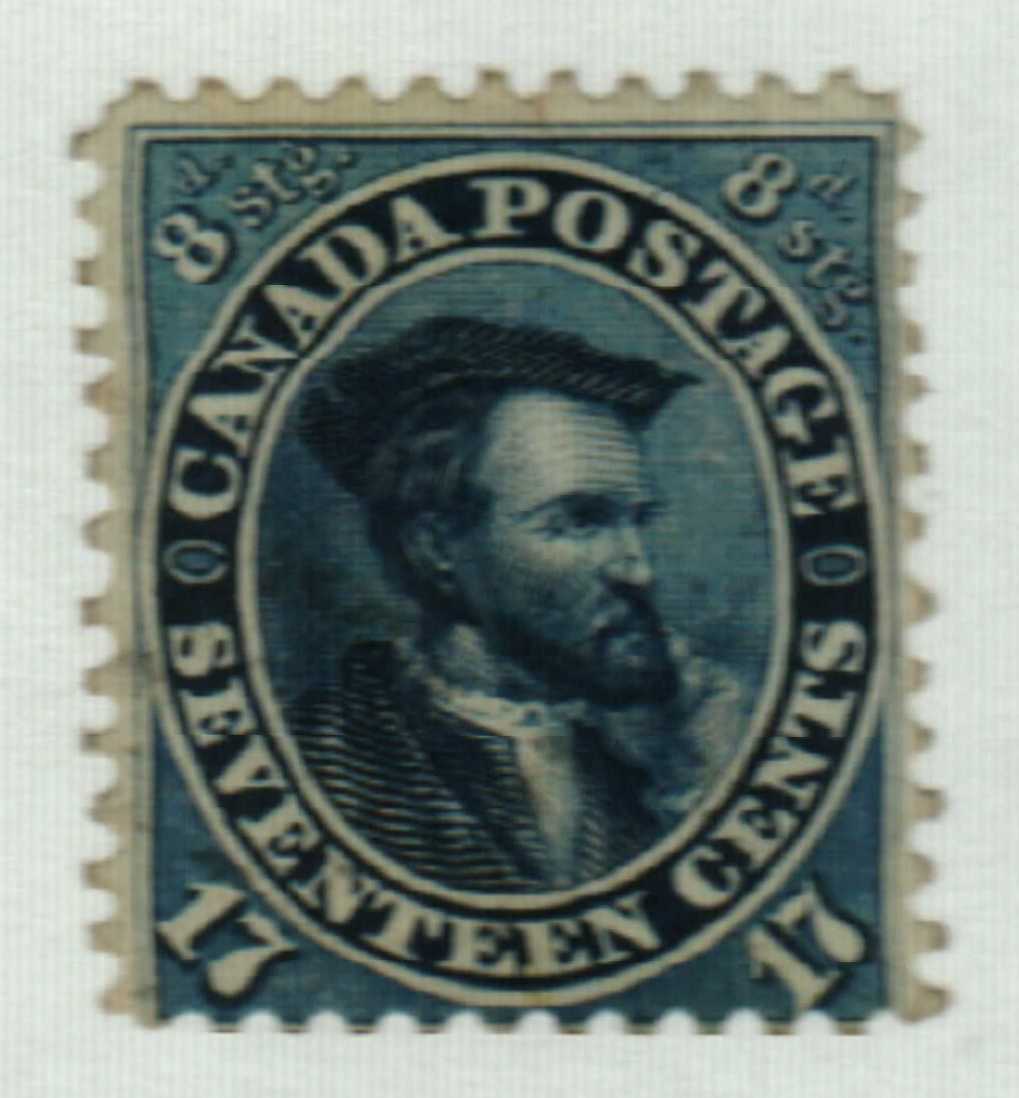
Cartier then entered the Gulf of St. Lawrence near the Strait of Belle Isle. After exploring that northern coast, he sailed down the west side of Newfoundland to Cape Anguille, making stops at Magdalen, Prince Edward Island, and Chaleur Bay. He claimed the Gaspe Peninsula in Quebec for France. Then on June 9, he reached the St. Lawrence River. Cartier sailed his ship down the river for some time but realized he couldn’t take it all the way to Asia and turned around. He then sailed around Anticosti Island, back past the Strait of Belle Isle and back to France.
During this trip, Cartier had three encounters with Native Americans. During one of these encounters, he took two sons of a tribe’s chief to bring back to France, promising to bring them back when he returned on another voyage. Upon returning to France, Cartier’s tales of fertile lands, which were previously thought to be barren, excited the king. He ordered Cartier to take a second voyage.
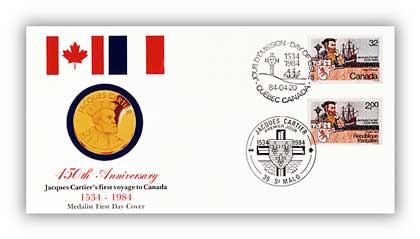
Cartier left on his second voyage on May 19, 1535, with three ships and 110 men. Arriving in North America, he sailed up the St. Lawrence to the Iroquois capital to return the chief’s sons. Arriving in October, he was greeted by over 1,000 people as he came ashore. (The site of his landing now has a bridge that bears his name.) Cartier was convinced that this river was the Northwest Passage he was searching for, and believed that the nearby rapids were all that kept him from sailing to China. Those rapids and the town near them became known as the Lachine Rapids and Lachine, Quebec (La Chine is French for China).
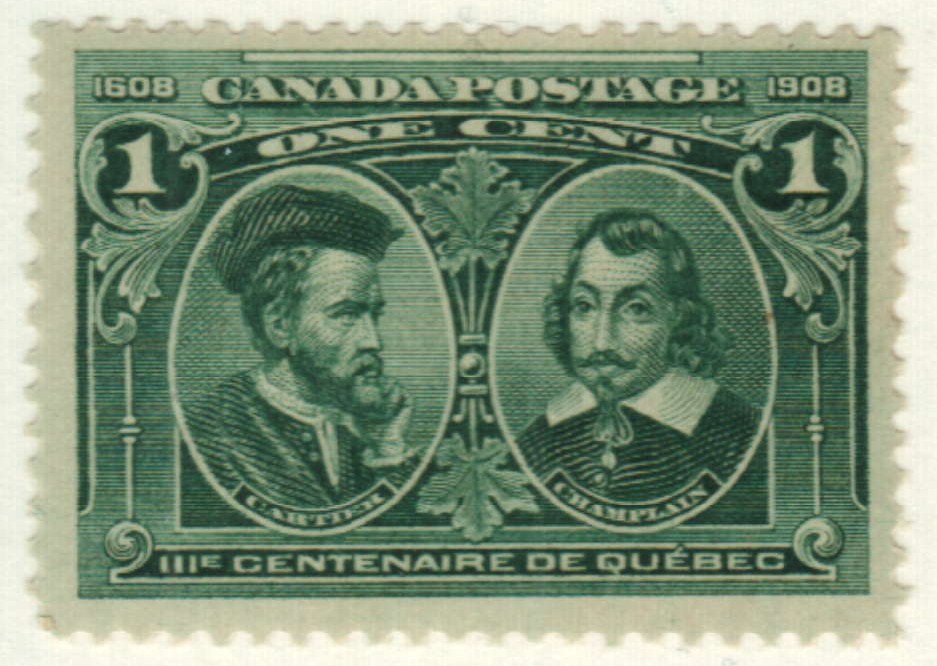
During this trip, Cartier also inadvertently named Canada. During his time at the rapids near present-day Montreal, he asked the natives what lay further up the river, and they replied “Kanata.” Cartier thought they meant the name of a country and called the area “Canada” on his map. It was not discovered until later that the Indians were referring to the little village upstream, as the Kanata is the Iroquois word for village or settlement.

This time, Cartier brought the chief back to France with him, so he could tell the king about a country further north that was said to be full of gold, rubies, and other treasures. The king was once again impressed and sent Cartier back to North America, but this time as chief navigator, with Jean-Francois de La Rocque de Roberval in command.
| US and Canada joint-issues honoring the St. Lawrence Seaway. | |
On this journey, Cartier was no longer looking for a passage to Asia. Instead, he was to find the legendary Kingdom of Saguenay and create a settlement on the St. Lawrence River. He established that settlement at present-day Cap-Rouge, Quebec and found what he thought were diamonds, but were quartz crystals and iron pyrites. The settlement ultimately failed due to illness and conflicts with the natives and Cartier returned to France in June 1542. He died there in 1557. As the years went on, the St. Lawrence River would become one of the most important trade waterways in North America.
Cartier Explores St. Lawrence River

On June 9, 1534, Jacques Cartier became the first European explorer to travel the St. Lawrence River.
Cartier was born on December 31, 1491, in Saint-Malo, Brittany, France. In 1534, the bishop of Saint-Malo introduced Cartier to King Francis I and recommended him for a commission to search for a northwest passage to Asia. The bishop claimed Cartier had previously journeyed to Newfoundland and Brazil, exhibiting his ability to “lead ships to the discovery of new lands in the New World.”

Cartier set sail on April 20, 1534, with a crew of 61 men and a mission to “discover certain islands and lands where it is said that a great quantity of gold and other precious things are to be found.” He sailed across the ocean for 20 days before reaching North America. Beginning on May 10, Cartier explored parts of Newfoundland in the Canadian Atlantic provinces.

Cartier then entered the Gulf of St. Lawrence near the Strait of Belle Isle. After exploring that northern coast, he sailed down the west side of Newfoundland to Cape Anguille, making stops at Magdalen, Prince Edward Island, and Chaleur Bay. He claimed the Gaspe Peninsula in Quebec for France. Then on June 9, he reached the St. Lawrence River. Cartier sailed his ship down the river for some time but realized he couldn’t take it all the way to Asia and turned around. He then sailed around Anticosti Island, back past the Strait of Belle Isle and back to France.
During this trip, Cartier had three encounters with Native Americans. During one of these encounters, he took two sons of a tribe’s chief to bring back to France, promising to bring them back when he returned on another voyage. Upon returning to France, Cartier’s tales of fertile lands, which were previously thought to be barren, excited the king. He ordered Cartier to take a second voyage.

Cartier left on his second voyage on May 19, 1535, with three ships and 110 men. Arriving in North America, he sailed up the St. Lawrence to the Iroquois capital to return the chief’s sons. Arriving in October, he was greeted by over 1,000 people as he came ashore. (The site of his landing now has a bridge that bears his name.) Cartier was convinced that this river was the Northwest Passage he was searching for, and believed that the nearby rapids were all that kept him from sailing to China. Those rapids and the town near them became known as the Lachine Rapids and Lachine, Quebec (La Chine is French for China).

During this trip, Cartier also inadvertently named Canada. During his time at the rapids near present-day Montreal, he asked the natives what lay further up the river, and they replied “Kanata.” Cartier thought they meant the name of a country and called the area “Canada” on his map. It was not discovered until later that the Indians were referring to the little village upstream, as the Kanata is the Iroquois word for village or settlement.

This time, Cartier brought the chief back to France with him, so he could tell the king about a country further north that was said to be full of gold, rubies, and other treasures. The king was once again impressed and sent Cartier back to North America, but this time as chief navigator, with Jean-Francois de La Rocque de Roberval in command.
| US and Canada joint-issues honoring the St. Lawrence Seaway. | |
On this journey, Cartier was no longer looking for a passage to Asia. Instead, he was to find the legendary Kingdom of Saguenay and create a settlement on the St. Lawrence River. He established that settlement at present-day Cap-Rouge, Quebec and found what he thought were diamonds, but were quartz crystals and iron pyrites. The settlement ultimately failed due to illness and conflicts with the natives and Cartier returned to France in June 1542. He died there in 1557. As the years went on, the St. Lawrence River would become one of the most important trade waterways in North America.







